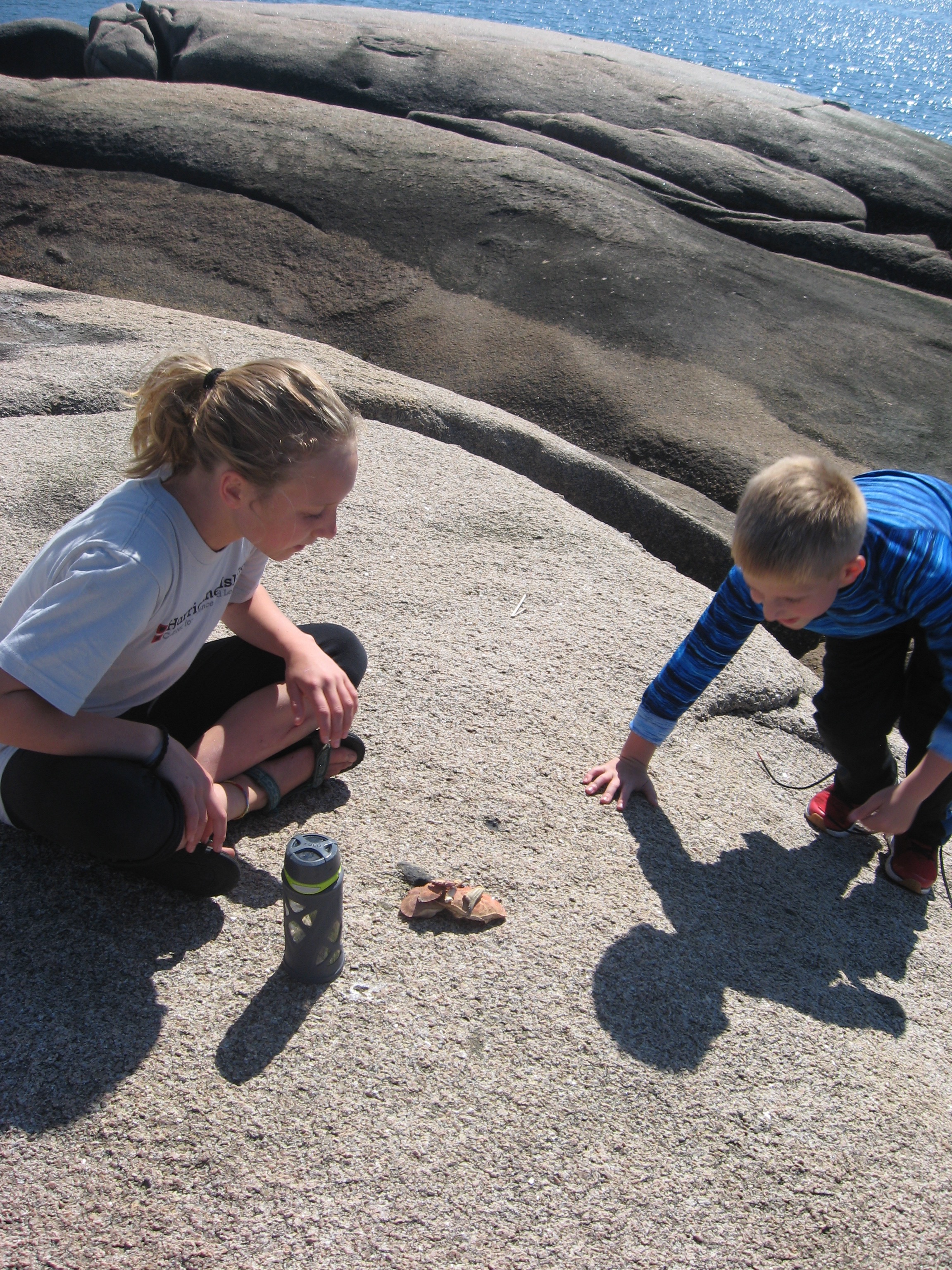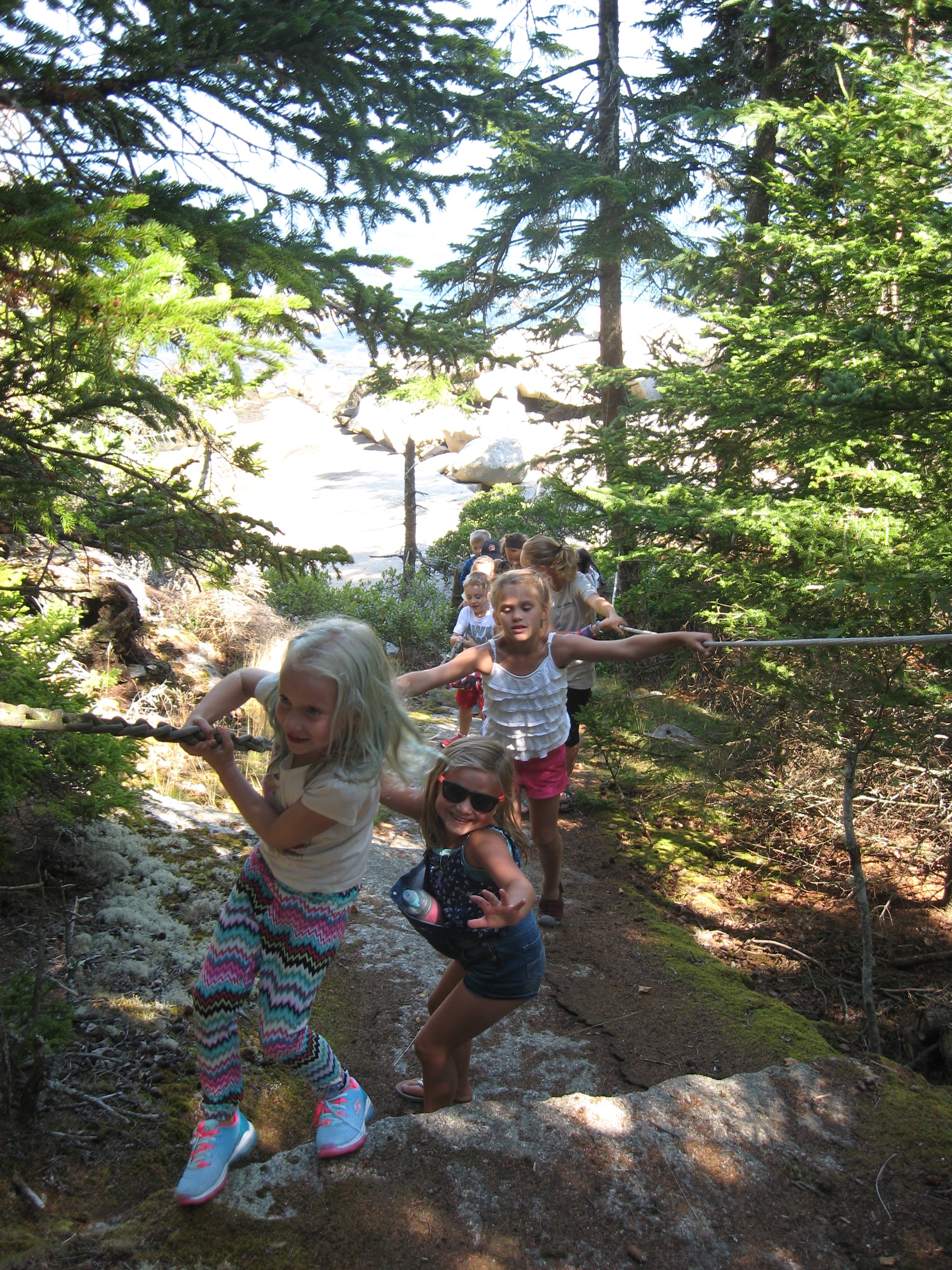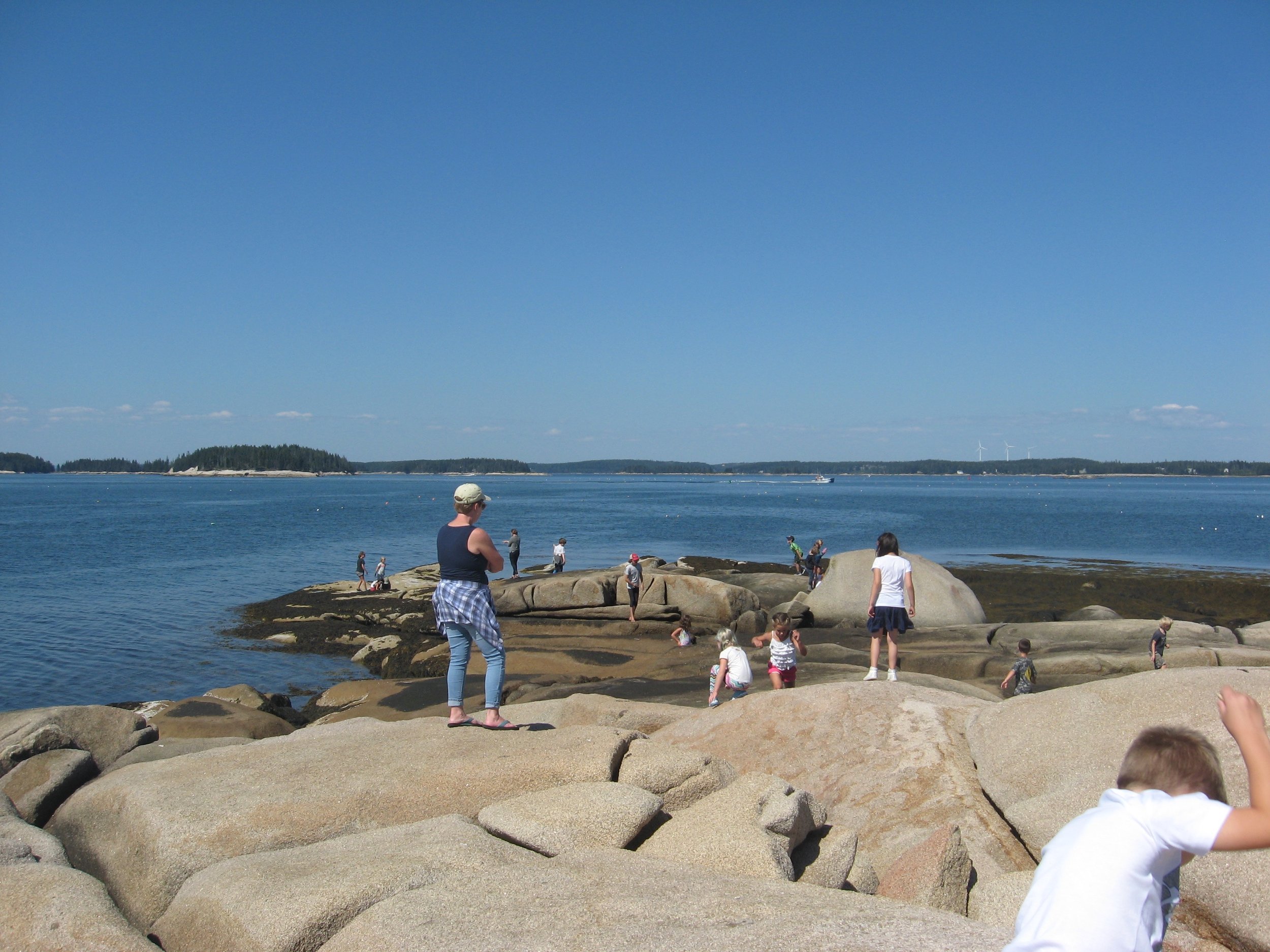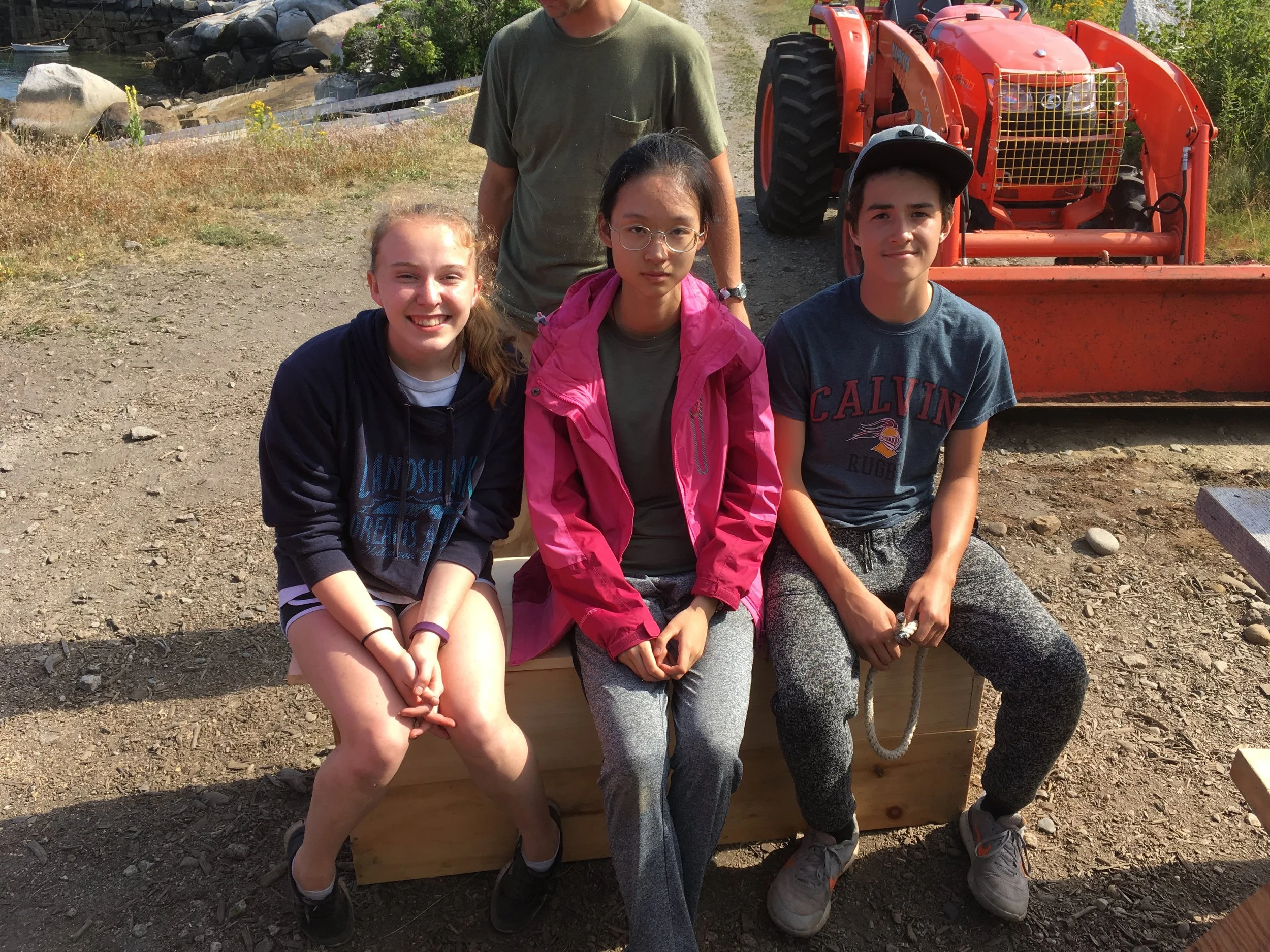Guest blog post by Science Educator Isabelle Holt
Hurricane resident, daughter of chef Julie, and avid young scientist Clementine passes down her knowledge about crabs.
Last week we had the immense pleasure of having the Camden-Rockport multiage class out on Hurricane where they learned about the rocky shores of the coast of Maine. 23 first and second graders piled on to the Equinox in our newly acquired bright-orange child-size life jackets. Excitement was high as we moved off the coast and even higher when we arrived on Hurricane and began to explore all that the island has to offer.
Algae says HOLDFAST!! Students clutch their feet to mimic the root-like structure that allows kelp to stay anchored in the buffeting waves.
The curiosity, optimism, and enthusiasm of these young scientists was the perfect way to wrap up the end of our long summer season and dive into fall programming. Not only was it our official first day of fall on Hurricane it was also Camden-Rockport’s first day of school! Without wasting time we got right down into the intertidal to find some of the marine organisms that call Maine’s rocky coasts their home. Streaks and shouts of excitement that most likely could be heard all the way on Vinalhaven were uttered as students learned how to identify and sex crabs, how to tell the age of a piece of rock weed, and how to hum so periwinkles would put out their antennae and start moving across their hands.
Students commune with the granite that makes up the vast majority of the island.
After lunch students were given the opportunity to reflect on how the different organisms they had just discovered were specifically adapted to the environment in which they live. After which we played some vigorous rounds of “Algae Says,” where students act out the different primary parts of a piece of algae, and “Sharks and Minnows,” a game designed to help children think about predator-prey relationships. By connecting these games to what the students had just seen in the field, we were able to make theoretical ecology just a little bit more concrete for these young scientists.
Students make the climb up some boulders on the way to Gibbons Point.
We wrapped up our day on Hurricane with a hike to Gibbons Point where we got to explore a different kind of rocky shore, the whaleback geologic formations, giant gently curved masses of granite that look like the back of a behemoth rising from the depths. After what was a long hike for small feet, we returned to the pier just in time to have a snack and catch the boat back to the mainland. Camden-Rockport Multiage came to Hurricane to learn about the rocky coast and in the process these lovely students thoroughly rocked it!
Students explore the 'whalebacks' at Gibbons.
































